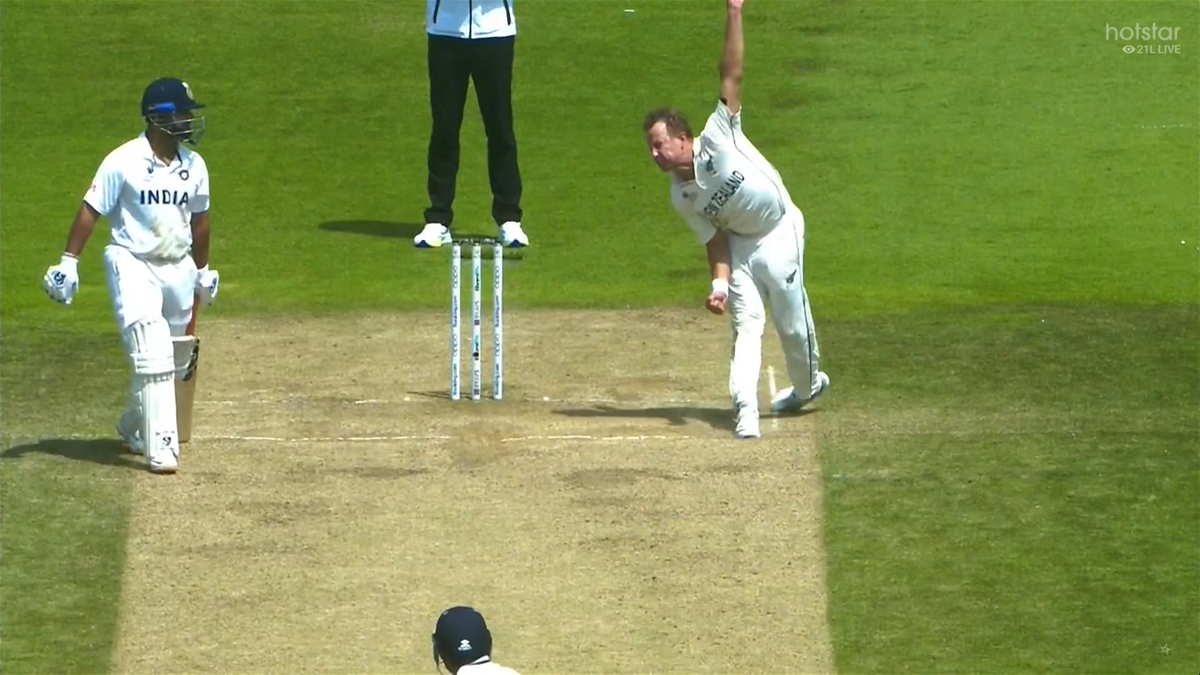
Ravindra Jadeja’s dismissal on day six of the World Test Championship final has courted controversy after some wondered if Neil Wagner had bowled a back-foot no-ball – here’s a look into the laws to understand why Wagner’s delivery was perfectly legitimate.
Subscribe to the Wisden Cricket YouTube channel for post-match awards, player interviews, analysis and much more.
Wagner’s short-ball barrage against Jadeja bore fruition when the Indian all-rounder nicked through to the keeper to expose India’s lower order. Even as New Zealand celebrated the wicket, a few wondered if Wagner’s back foot had trespassed the return crease, in which case it would be a no-ball.
As per me, Wagner has almost bowled 5-6 similar no balls in the last few overs. I am watching the Hindi commentry and really surprised that no one is calling that out except for that one time @cricketaakash talked about this. Who is gonna ask the umpires to take a note of it? https://t.co/NacXKvBXJh
— Ricky talks cricket (@CricRicky) June 23, 2021
Replays showed Wagner had indeed crossed over the return crease before delivering the ball, but the decision stood even after an umpire referral. This wasn’t a mistake however, and Wagner wasn’t on the wrong side of the law. His foot had landed fine before it crossed over the line, which meant the delivery was legitimate.
According to the MCC no-ball law, the landing position of the foot is the decider in arriving at the no-ball call.
For a delivery to be fair in respect of the feet, in the delivery stride,
21.5.1 the bowler’s back foot must land within and not touching the return crease appertaining to his/her stated mode of delivery. [empahsis added]
Wagner often flirts with the return crease in his bowling stride. Notably, India were at the receiving end of a controversial decision in 2014 in New Zealand during a closely fought Test match when MS Dhoni was given out bowled off Wagner, but replays showed Wagner’s foot had possibly landed on the return crease.








